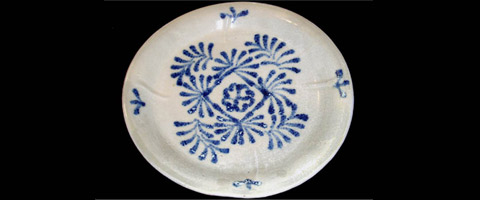Historic trade routes
28th June 2010
Ship’s Log
On a quiet sailing day it’s an opportunity to think about the history of the Jewel and her cargo
A long, hot and uneventful day. The changing winds and currents continued to fix us in one place despite our best efforts to make forward progress. For much of the day the sails hung utterly limp from the yards, but we picked up a gentle westerly breeze about an hour ago (2200) which is moving us slowly back toward our original course. Distant lightning is visible to the west so it’s possible that we’ll get some rain and wind by dawn.
Alexa, from Chagrin Falls Ohio, wrote recently to ask, “Is the cargo of the Belitung wreck the earliest evidence of Arabs and Persians importing pottery from China?” Actually Alexa, this question is at the core of current research and debate among scholars. As you may know, the Belitung wreck (i.e., the 9th century ship of which the Jewel of Muscat is a reconstruction) was carrying approximately 60,000 pieces of Tang Dynasty pottery–the largest collection of 9th century Chinese ceramics ever discovered. Equally exciting is the fact that the majority of the pieces were recovered intact. Given that the Belitung ship probably sank between 826 CE and 830 CE, and that it was carrying such a large cargo of ceramics, it is probable that direct trade in ceramics between the Near East and China had already been going on for some decades–possibly by the mid- to late 8th century. Extant textual evidence corroborates this time-frame.
In 1059 CE, Muhammad Ibn Al Husayn Baihali wrote that the Abbasid Caliph Harun Al Rashid (786-809 CE) had received a gift of “twenty pieces of imperial China-ware, including bowls, cups, and half-cups, the likes of which had never been seen at a Caliph’s court before, in addition to 2,000 other pieces of porcelain.” In addition to this textual evidence, archaeological excavations of a mosque in the ancient Iranian port city of Siraf revealed Chinese stoneware dating to the very early 9th century–perhaps two decades before the Belitung ship left China on its fateful voyage.
So, although the cargo of the Belitung wreck is not quite the earliest evidence of direct ceramics trade between China and the Near East, it certainly constitutes the most substantial and valuable evidence of that trade. No doubt scholars will continue to glean new information from their analysis of this fascinating collection of Tang Dynasty pottery for many years to come. And I can assure you that the crew of the Jewel of Muscat is eagerly looking forward to the possibility of seeing the collection in person during their stay in Singapore.

